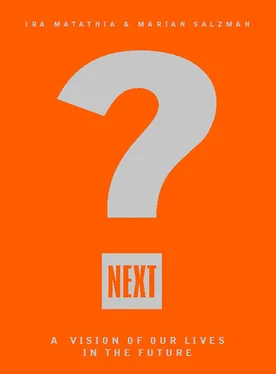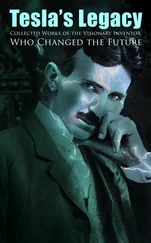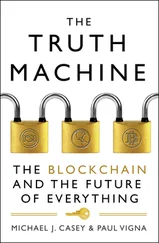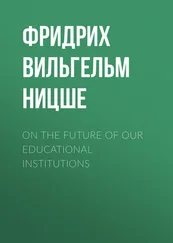People in many parts of the world are undergoing a similar shift from a therapeutic to a prophylactic perspective. As we attempt to take advantage of the benefits of new technologies and other conveniences, we remain acutely aware of the potential pitfalls. And, in a world travelling at hyperspeed, it’s a brave (or delusional) person who never once has questioned whether he or she is going to be able to keep up.
Big Next: Global vs Hyperlocal
As the world gets smaller and smaller, we aren’t just becoming more globally aware, we’re also becoming increasingly focused on the hyperlocal places and communities in our lives. The authors of this book are decidedly global. In a typical few months Ira holidayed with his family in Italy and visited Berlin with Marian to speak to international business people and journalists. Marian also travelled to Copenhagen, Amsterdam and Kuala Lumpur (Malaysia) in the course of her job.
The two of us are also decidedly hyperlocal. In a representative week Ira raced from a session with a prospective publisher to a school board meeting in the Connecticut town where he lives, and where one of his children attends a public elementary school. He also belongs to a number of committees related to the advertising community that do good works. Meanwhile, Marian had a date with her university alumni club, because that’s the community that has been the most important to her over the last decade. She also attended a Women in New Media breakfast – networking is an eighties buzzword that in the nineties translates into forging hyperlocal ties.
It seems to us that achieving a balance between global and hyperlocal will be of increasing importance both to people and brands in the years ahead. For people, hyperlocal ties help us to partition the world into manageable chunks. I may not know how to solve the problems that may arise from Europe’s new single currency, but I can create a workable budget for my homeowners’ association or chess club. I may feel a bit overwhelmed when surfing through Usenet newsgroups, but I feel very much at home when chatting with people in my online hobbyist group.
For brands, the push and pull of the global and hyperlocal continuum is somewhat different. Aided by their embrace of new technologies – which keep them plugged into world events and points of view – new consumers have developed the rudiments of a global outlook that infuses the way they think, the way they act – the way they buy. Transnational commerce is leading, in turn, towards media globalization. As the ‘global consumer’ becomes more of a reality, we’re seeing a deepening awareness that marketing messages can – and should – be transmitted across borders. Disney, Coke, Nikon, Apple, IBM, Levi’s and Nike are just some of the brands already globally consistent.
Today’s drive towards globalization means companies need to make hard decisions on everything, from whether brand names need to be globally consistent to which brand messages translate across cultures, to what logo or icon can best represent their brand around the world. Not every company can have a symbol as globally recognized as the Nike swoosh – but all of them would like to! As brands consider the implications of going global, it’s important that they recognize, too, the enormous draw of hyperlocal connections. Forging hyperlocal links with consumers is a must for tomorrow’s brands – no matter how global. The trick lies in providing messages that balance universal appeal with sufficient ‘localization’ to attract and retain the interest of consumers in each market. In fact, we can safely assume that tomorrow’s mass-appeal brands will share three commonalities: global relevance, hyperlocal desirability and strong ties to multiple niches.
How can a product have both global relevance and hyperlocal appeal? Some smart brands will take advantage of convergence opportunities. When done right, convergence is about brands bonding because their combined power is greater than the sum of their parts. Moving forward, we can expect to see global champions such as Frito-Lay co-brand with such local winners as the Netherlands’ Smith’s crisps, thereby ensuring that ubiquity and familiarity are in sync.
Smart marketers are also coming up with other ways to give mass-produced products local appeal. How many of us have been fooled by seemingly ‘homegrown’ microbrews and speciality snack products in our grocery stores, which are, in fact, manufactured by the very same conglomerates selling mass products a bit further down the aisle? Slap on a local-sounding name or the colours of a local sports team, and consumers are apt not to read the small print about the product’s true origins.
In the fast-food world, the Jollibee chain is a good example of how to combine successfully a global product with local touches. Although the Filipino chain sells hamburgers, it tailors these ‘all-American delights’ to suit the local market’s tastes (Jollibee’s hamburgers in the Philippines, for instance, come with sweet-and-sour sauce flavouring.) The result: Jollibee has not only outmanoeuvred McDonald’s in the Philippines, but has also opened multiple outlets in south-east Asia and the Middle East. Jollibee recently took on McDonald’s on its home turf, opening outlets in San Francisco and Los Angeles, home to large Filipino populations.
On a city level, one can see how globality and hyperlocality can co-exist and actually enrich one another. Amsterdam, for instance, despite being a comfortable participant on the world stage, has managed to retain a sense of being a village of locals. When Adidas, one of the most on-trend brands in the world, relocated many of its creative, marketing, promotions and sales functions to Amsterdam, the Dutch press explained it thus: ‘Amsterdam is chosen as second headquarters for its international cosmopolitan feel, in a village setting; a wonderful lifestyle.’
Contrast the June 1997 European Union summit (a.k.a. Eurotop) in Amsterdam with the Olympic Games at Nagano. The Amsterdam event felt as if the world had been invited to a New Age picnic (BYOB) and musical celebration of the future. In striking contrast, the rural, sleepy, isolated village of Nagano, in Japan, seemed to be resisting the exhortations of CBS to ‘spend a moment with the world’. Amidst reports that local businesses were actually turning away ‘foreigners’, the prevailing view of the townsfolk was that this intrusion from the outside world was simply to be ‘suffered’ as they eagerly awaited a return to anonymity.
Big Next: Nostalgia and Futurism: a Winning Yin and Yang
Throughout our global village, residents are being asked to accommodate change at an unprecedented pace. As the new world order demands that we adapt to a broad array of new cultural, political, economic and technological influences, we can’t fail to recognize the truth in the adage, ‘Change is life’s only constant.’
In the West, anxiety about change is exacerbated by premillennial tension. As observed by John Naisbitt, the millennium is a metaphor for the future; wrapped up in it are our greatest hopes – and our greatest fears. We’re uncertain how the changes to come will affect us personally. The result has been oscillation between optimism and anxiety. Indeed, the two of us have been struck by how much of society’s ‘future view’ is caught up in such paradoxes. Today’s trends include a push towards risk and safety, indulgence and cost-consciousness. But no paradox is as interesting, nor as marketable, as that of nostalgia and futurism. As put by marketing consultant James Rosenfield, ‘People seem to be trying on both the past and the future for size.’ 1
These co-existing tendencies toward nostalgia and futurism are not unexpected – when confronted with accelerated change, people gravitate to that which is most familiar and most comfortable, whether it be a particular brand of food, an old TV show or a retro fashion. But because swearing off the future and change is simply not an option, we alleviate our anxieties by finding a balance between what has been, what is and what is to come. The exact ‘comfort’ equation is as unique to each individual as his or her fingerprints, but most involve creating a sturdy bridge that spans past, present, and future. Marketers and product developers must take this consumer duality into account in order to strike a balance that’s appropriate for their target. Chanel’s fall ’98 ready-to-wear collection rose to the challenge by featuring both very, very long skirts (a nod to the attire of Coco’s youth) and a new bag designed for the millennium called ‘2005’.
Читать дальше












